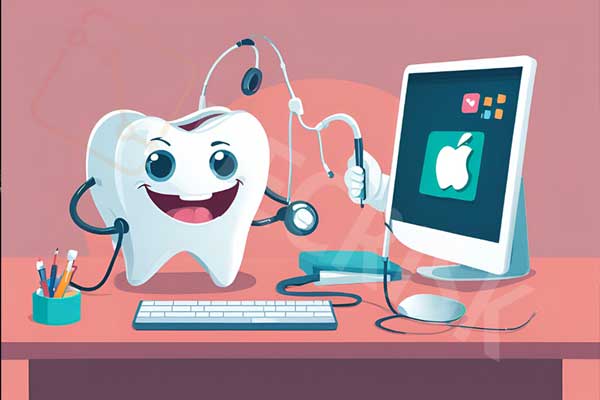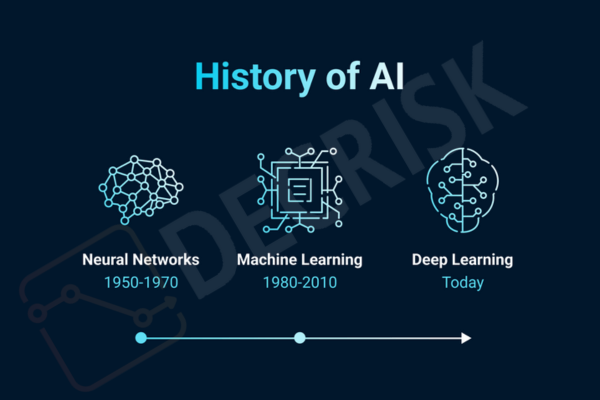Artificial Intelligence (AI) is making significant strides in dentistry, much like in other industries. AI’s role in dentistry spans various applications, including diagnosis, decision-making, treatment planning, and predicting treatment outcomes like 3D segmentation and dental image analysis. Among these, diagnosis stands out as the most prominent use of AI. With AI, diagnoses become more accurate and efficient, lightening the workload for dentists. On one hand, dentists increasingly rely on computer programs for making decisions . On the other hand, these programs are becoming more intelligent, accurate, and reliable, spreading AI research across all dental fields.

Despite a wealth of journal articles on dental AI, comparing studies can be challenging due to variations in study design, data allocation (training, test, and validation sets), and model performance metrics like accuracy, sensitivity, specificity, F1 score, AUC (Area Under the ROC Curve), and recall. Most articles fail to fully report this information. To address this, the MI-CLAIM (Minimum Information about Clinical Artificial Intelligence Modeling) checklist has been proposed to ensure transparency and utility in applying AI in medicine .
AI in Operative Dentistry
Traditionally, diagnosing dental caries involves visual and tactile examination or radiographic techniques. However, early-stage lesions can be difficult to detect, especially in deep fissures, tight interproximal contacts, or secondary lesions. Often, these lesions are only identified at advanced stages, leading to more complex treatments like dental crowns, root canal therapy, or implants. While dental radiography and explorers (dental probes) are highly reliable diagnostic tools, much of the diagnosis still depends on the dentist’s experience.
AI has been researched extensively in operative dentistry, focusing on detecting dental caries, vertical root fractures, apical lesions, pulp space volumetric assessment, and tooth wear . In two-dimensional (2D) radiographs, each grayscale pixel represents the density of the object. AI algorithms can learn these patterns to predict and segment the tooth, detect caries, and more. For example, Lee et al. developed a convolutional neural network (CNN) to detect dental caries on periapical radiographs , while Kühnisch et al. created a similar algorithm for detecting caries on intraoral images . Schwendicke et al. found that AI was more cost-effective and accurate than dentists in detecting proximal caries .
These studies show that AI holds great promise in early lesion detection, often matching or exceeding the accuracy of dentists. This progress is made possible through collaboration between computer scientists and clinicians. Clinicians manually label radiographic images to identify caries, while computer scientists prepare the dataset and machine learning (ML) algorithm. Both groups then verify the accuracy and precision of the training results together .
AI in Periodontics
Periodontitis is one of the most widespread diseases, affecting billions and leading to tooth mobility and loss if untreated . Early detection and treatment are crucial. Typically, periodontal disease diagnosis relies on evaluating pocket probing depths and gingival recession, often quantified using the Periodontal Screening Index (PSI). However, this clinical evaluation is not always reliable, as it heavily depends on the dentist’s experience, risking the oversight of localized periodontal tissue loss .
AI has been utilized in periodontics to diagnose periodontitis and classify potential periodontal disease types . For instance, Krois et al. used CNN to detect periodontal bone loss on panoramic radiographs . Lee et al. evaluated the accuracy of a CNN algorithm for automatically detecting periodontally compromised teeth . Additionally, Yauney et al. developed a CNN algorithm to examine periodontal conditions using systemic health-related data .
AI in Orthodontics
Orthodontic treatment planning traditionally relies on the experience and preference of the orthodontist, considering that every patient and orthodontist is unique. Diagnosing malocclusion is particularly challenging, as numerous variables must be considered in cephalometric analysis, making it difficult to determine the treatment plan and predict the outcome . AI offers a powerful solution to these orthodontic challenges.
In orthodontics, AI assists in treatment planning and predicting results, such as simulating pre- and post-treatment facial appearance changes. AI algorithms help identify skeletal patterns and anatomic landmarks in lateral cephalograms, significantly improving communication between patients and dentists .
For instance, a Bayesian-based decision support system was developed to diagnose orthodontic treatment needs based on relevant data . Xie et al. proposed an artificial neural network (ANN) model to assess whether extractions are necessary based on lateral cephalometric radiographs . Similarly, Jung et al. developed an evaluation system for orthodontic extractions . AI has also been adopted to locate cephalometric landmarks, with high accuracy achieved by various algorithms . Additionally, AI systems have been used in orthodontic treatment planning, including tasks like tooth segmentation and classification on radiographs and 3D scans .
AI in Oral and Maxillofacial Pathology
Oral and Maxillofacial Pathology (OMFP) is a specialty focused on diagnosing diseases and conditions in the oral and maxillofacial region, with oral cancer being the most severe. According to the World Health Organization (WHO), over 657,000 people are diagnosed with oral cancer yearly, resulting in more than 330,000 deaths . AI has been researched extensively for tumor and cancer detection using radiographic, microscopic, and ultrasonographic images.
AI also aids in detecting abnormal sites on radiographs, such as nerves in the oral cavity, interdigitated tongue muscles, and salivary glands. CNN algorithms have proven effective in automatically detecting cancers . Moreover, AI plays a significant role in managing cleft lip and palate, assisting in risk prediction, diagnosis, pre-surgical orthopedics, speech assessment, and surgery .
Early detection and diagnosis of mucosal lesions are critical for classifying them as benign or malignant. While surgery is necessary for malignant lesions, diagnosing these conditions often requires comparing biopsy slides and radiographs due to their similar appearance. AI can significantly aid pathologists in this labor-intensive task .
For example, Warin et al. utilized CNN to detect oral potentially malignant disorders (OPMDs) and oral squamous cell carcinoma (OSCC) in intraoral optical images . James et al. used ANN and support vector machine (SVM) models to distinguish malignant and dysplastic oral lesions . Heidari et al. employed a CNN network, AlexNet, to differentiate normal and abnormal head and neck mucosa . Abureville et al. applied CNN to diagnose oral squamous cell carcinoma (SCC) from confocal laser endomicroscopy images . Poedjiastoeti et al. also used CNN to distinguish between ameloblastoma and keratocystic odontogenic tumor (KCOT), achieving high accuracy and rapid diagnosis .
AI in Prosthodontics
In prosthodontics, preparing a dental crown involves several steps, from tooth preparation to cementation. AI’s application in this field primarily lies in restoration design . CAD/CAM systems have digitized the design process, improving efficiency with products like CEREC, Sirona, and 3Shape. However, these systems still fall short of achieving custom-made designs for individual patients .
With AI, new approaches to crown generation have emerged. For instance, 2D-GAN models have been used to generate crowns by learning from technician designs, utilizing 2D depth maps converted from 3D tooth models . Ding reported a 3D-DCGAN network that directly uses 3D data for crown generation, producing crowns with morphology similar to natural teeth . Integrating AI with CAD/CAM or 3D/4D printing can create more efficient workflows with high precision . AI has also been applied in shade matching and predicting the debonding of CAD/CAM restorations .
Designing removable dentures presents more challenges due to the numerous factors involved. While no machine learning (ML) algorithm currently exists for this purpose, several expert systems have been introduced . ML algorithms now focus on assisting the design process, such as classifying dental arches and predicting facial appearance in edentulous patients .


